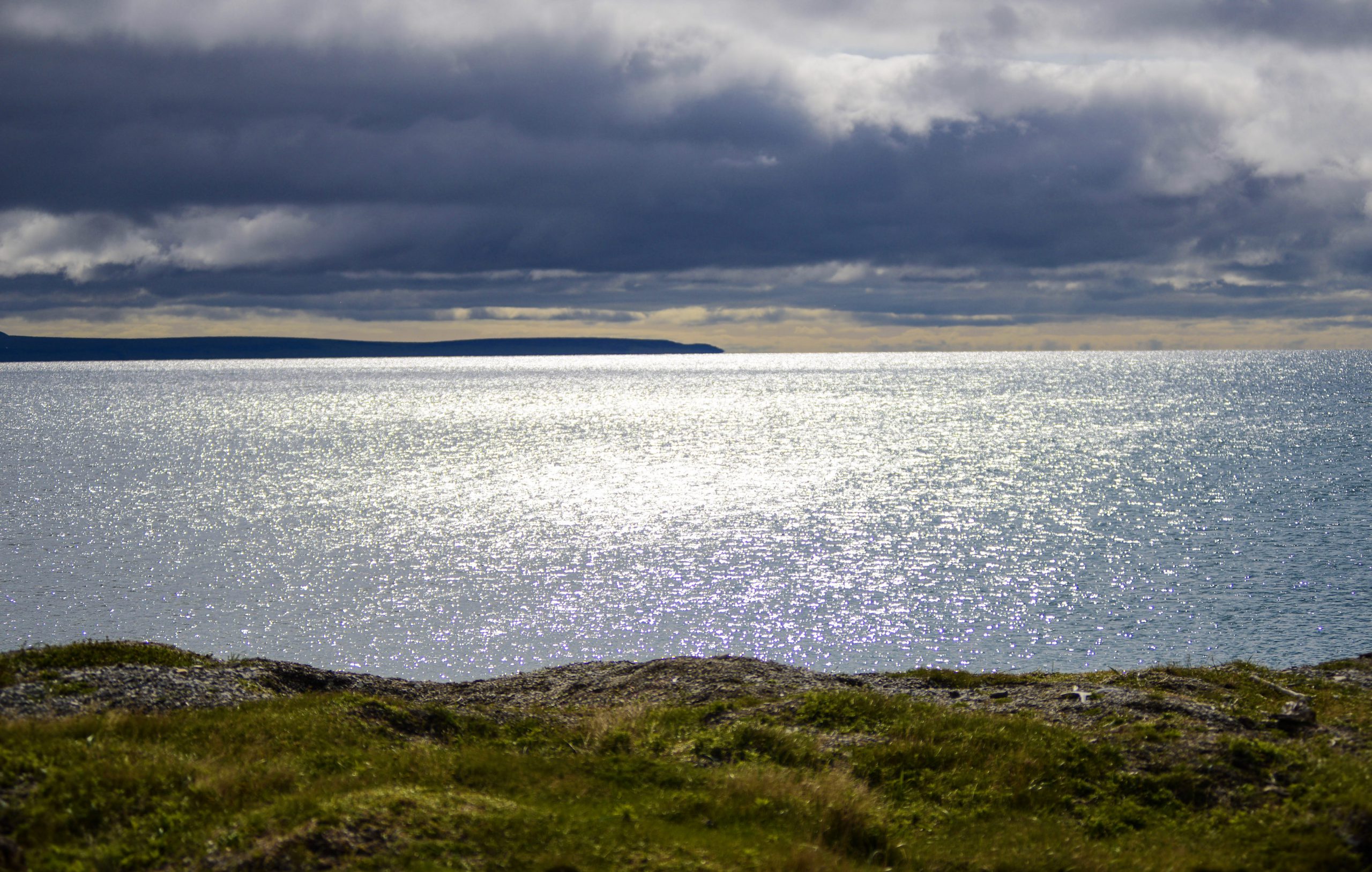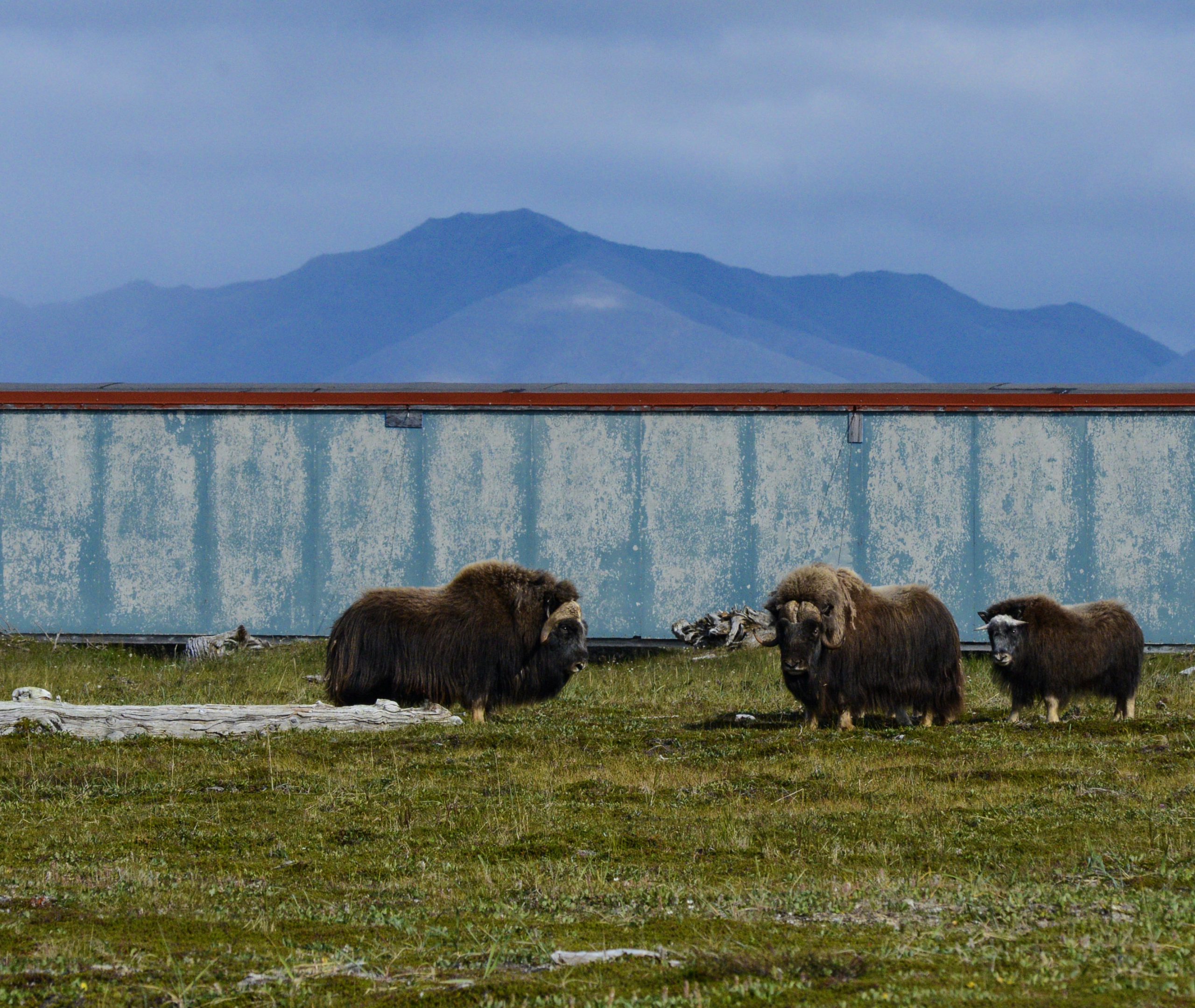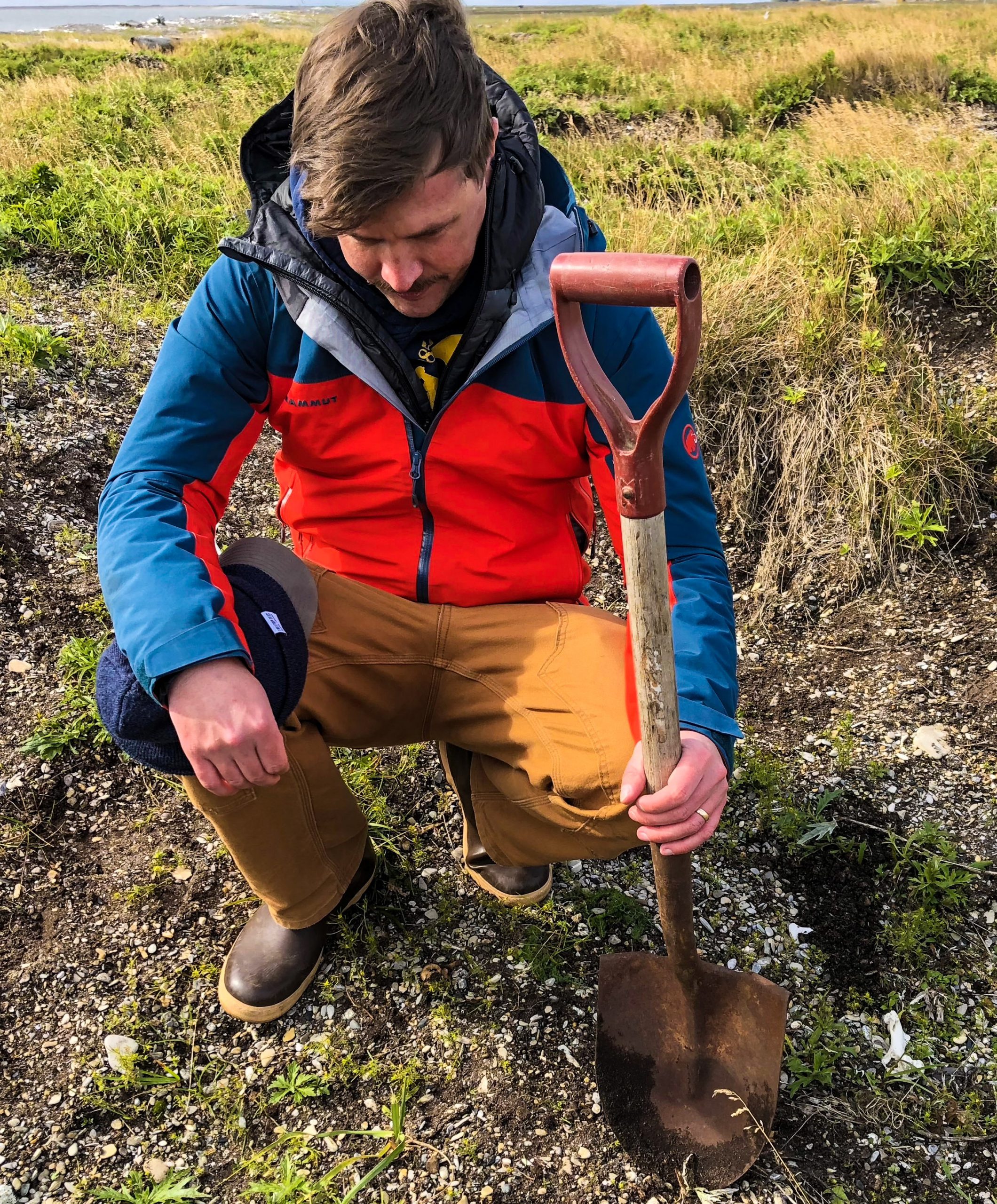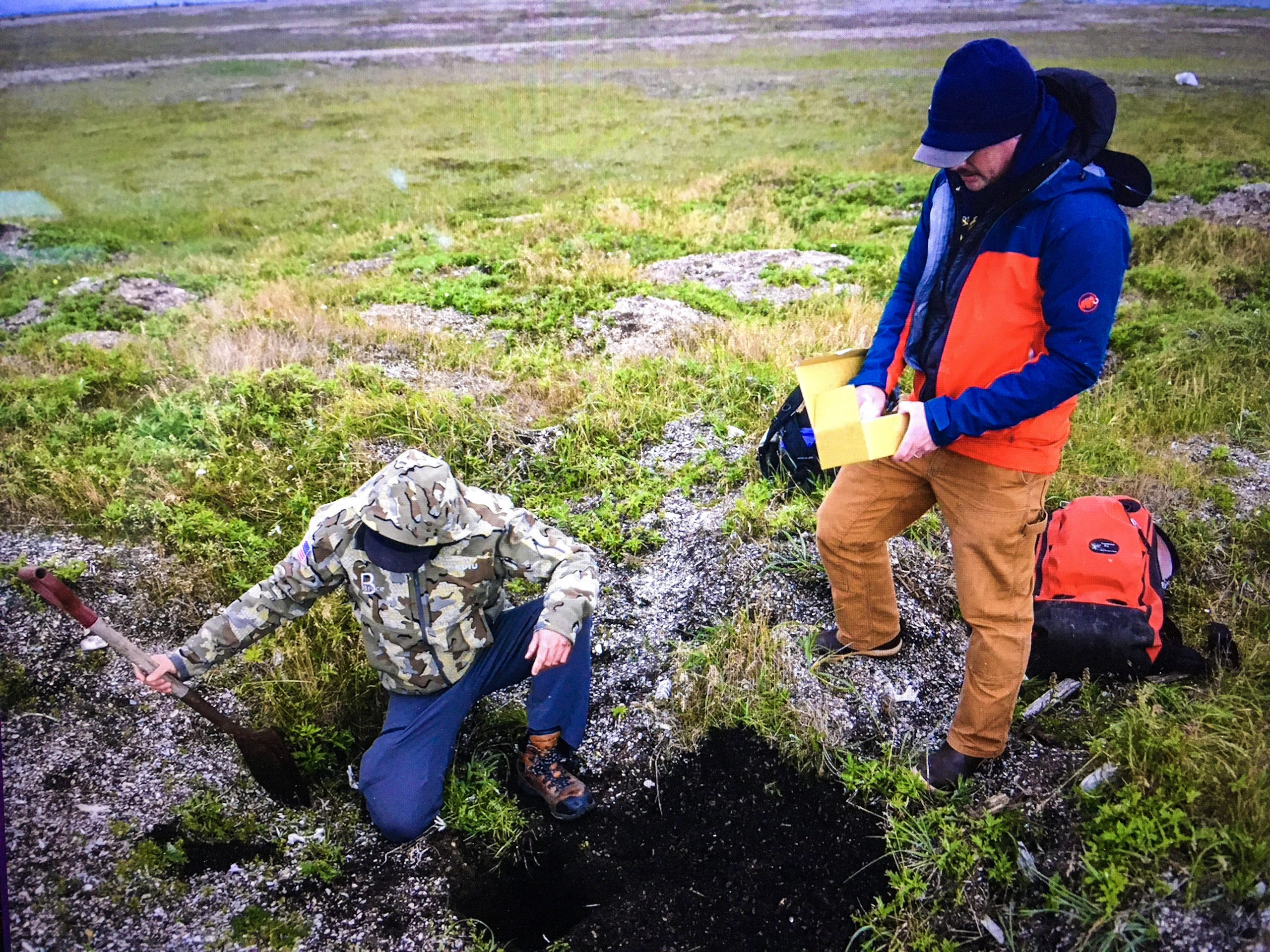Indianz.Com >
News > DVIDS: Ancestral remains repatriated to Alaska Native community
 The Bering Sea laps the shore of Point Spencer, Alaska, August 12, 2021, near the site of a Coast Guard-led Alaska Native remains repatriation effort. The returned human remains had been accidentally collected during an archaeological excavation on Coast Guard-owned property, near the former Long Range Aids to Navigation (LORAN) C Station at Port Clarence. Photo by Petty Officer 1st Class Nate Littlejohn / U.S. Coast Guard District 17
The Bering Sea laps the shore of Point Spencer, Alaska, August 12, 2021, near the site of a Coast Guard-led Alaska Native remains repatriation effort. The returned human remains had been accidentally collected during an archaeological excavation on Coast Guard-owned property, near the former Long Range Aids to Navigation (LORAN) C Station at Port Clarence. Photo by Petty Officer 1st Class Nate Littlejohn / U.S. Coast Guard District 17
Coast Guard repatriates Alaska Native remains at Point Spencer, Alaska
Friday, October 1, 2021
By Petty Officer 1st Class Nate Littlejohn, U.S. Coast Guard District 17
DOD DVIDS
A plane carrying a box of delicately-packaged, unidentified human remains touched down on a dirt runway at Point Spencer, Alaska, August 12, 2021. A startled musk ox kicked up clouds of dust as it galloped against a Bering Sea backdrop. Coast Guard physical scientist Ian Putnam disembarked and breathed the 37-degree summer air with a solemn but satisfied expression. Though he did not know whose remains he held, today he’d put the bones back where they belonged.
As the Natural and Cultural Resources Program manager with the Environmental Management Branch at Coast Guard Civil Engineering Unit Juneau, Putnam’s primary responsibility is to ensure Coast Guard compliance with all environmental regulations, and to see that natural and cultural resources are legally protected under Coast Guard action.
Putnam was just one team member responsible for working through the complexities of returning the remains to the site where they’d been accidentally collected during an archaeological excavation on Coast Guard-owned property, near the former Long Range Aids to Navigation (LORAN) C Station at Port Clarence. Point Spencer and Port Clarence are located in northwestern Alaska on the Seward Peninsula, about 85 miles northwest of Nome and 75 miles south of the Arctic Circle.
 Musk ox graze near an above-ground tunnel on Coast Guard-owned property, near the former Long Range Aids to Navigation (LORAN) C Station at Port Clarence, Alaska, August 12, 2021. Archeologists have determined that hundreds of years ago, Point Spencer served as a traditional meeting point and trading market for the Sinramiut and other regional Iñupiat bands, and that trade fairs occurred at Point Spencer that drew Iñupiat groups from across the Bering Strait, Arctic, and northwest Alaska. Photo by Petty Officer 1st Class Nate Littlejohn / U.S. Coast Guard District 17
Musk ox graze near an above-ground tunnel on Coast Guard-owned property, near the former Long Range Aids to Navigation (LORAN) C Station at Port Clarence, Alaska, August 12, 2021. Archeologists have determined that hundreds of years ago, Point Spencer served as a traditional meeting point and trading market for the Sinramiut and other regional Iñupiat bands, and that trade fairs occurred at Point Spencer that drew Iñupiat groups from across the Bering Strait, Arctic, and northwest Alaska. Photo by Petty Officer 1st Class Nate Littlejohn / U.S. Coast Guard District 17
The Coast Guard LORAN Station at Port Clarence closed in 2010, after which the service allowed academic and government researchers access to the property due to the cultural and historical significance of the site.
Archeologists have determined that hundreds of years ago, Point Spencer served as a traditional meeting point and trading market for the Sinramiut and other regional Iñupiat bands. Neighboring Kauwerak people visited Point Spencer on an annual basis for sea mammal hunting. The Sinramiut had ancestral ties and trade relationships with the people from Little Diomede and Wales. Trade fairs occurred at Point Spencer during the summertime and drew Iñupiat groups from across the Bering Strait, Arctic, and northwest Alaska.
“This has been an exceptionally significant site to the ancestral Iñupiat for many thousands of years,” said Edmund Gaines, a contracted archaeological consultant with Brice Environmental, who was instrumental through the repatriation process. “We have layers upon layers of occupations, extending back more than two millennia.”
In 2013 and 2015 the Coast Guard permitted a joint research team from Portland State University (PSU) and the U.S. Bureau of Land Management (BLM) to perform archaeological excavations and inventories at Point Spencer. The Coast Guard viewed the excavation as an opportunity to preserve cultural resources and mitigate damage to the site, while also allowing for academic research of an historically rich location. A significant amount of non-human animal remains were recovered and transported to the PSU archaeological laboratory for analysis. Several of the recovered remains were later discovered to be of human, or possible human origin, taken from the site by mistake.
Suspected human elements included a phalanx (big toe), a distal portion of a tibia, a tibia shaft fragment, a long bone fragment, and a tooth (canine) fragment. These remains were determined to be somewhere between 300 and 550 years old, approximately.
 Coast Guard physical scientist Ian Putnam, the Natural and Cultural Resources Program manager with the Environmental Management Branch at Coast Guard Civil Engineering Unit Juneau, pays respect after repatriating Alaska Native remains at Point Spencer, Alaska, August 12, 2021. Putnam’s primary responsibility is to ensure Coast Guard compliance with all environmental regulations, and to see that natural and cultural resources are legally protected under Coast Guard action. Photo by Petty Officer 1st Class Nate Littlejohn / U.S. Coast Guard District 17
Coast Guard physical scientist Ian Putnam, the Natural and Cultural Resources Program manager with the Environmental Management Branch at Coast Guard Civil Engineering Unit Juneau, pays respect after repatriating Alaska Native remains at Point Spencer, Alaska, August 12, 2021. Putnam’s primary responsibility is to ensure Coast Guard compliance with all environmental regulations, and to see that natural and cultural resources are legally protected under Coast Guard action. Photo by Petty Officer 1st Class Nate Littlejohn / U.S. Coast Guard District 17
Since the Native Alaskan human remains were removed from federal lands, the Native American Graves Protection and Repatriation Act (NAGPRA) regulations set forth in 43 CFR Part 10, applied. As the federal landholding agency for the entirety of Point Spencer at the time of excavation, the Coast Guard was responsible for NAGPRA compliance.
“The Coast Guard determined that the Native Village of Teller and the Native Village of Brevig Mission are traditionally associated with Port Clarence, based on what we understand to be the occupational history of that specific land form (Point Spencer),” said Putnam. “When looking at the historical record there, we suspected that these Tribes were the most likely to be culturally affiliated with earlier groups who occupied and used the lands at the discovery site.”
Both the Native Village of Teller and the Native Village of Brevig Mission are Federally Recognized Tribes.
The Coast Guard notified both villages and discussed the circumstances of the discovery and their potential claimant status. After a detailed assessment of the remains and the context of discovery in consultation with village representatives, the Coast Guard recognized Brevig Mission as aboriginally affiliated with the remains.
 Ian Putnam (right), a Coast Guard physical scientist, and Edmund Gaines, a Coast Guard-contracted archaeological consultant, prepare to repatriate unidentified Alaska Native remains at Point Spencer, Alaska, August 12, 2021. The two returned the remains to the site where they’d been accidentally collected during an archaeological excavation on Coast Guard-owned property, near the former Long Range Aids to Navigation (LORAN) C Station at Port Clarence. Photo by Petty Officer 1st Class Nate Littlejohn / U.S. Coast Guard District 17
Ian Putnam (right), a Coast Guard physical scientist, and Edmund Gaines, a Coast Guard-contracted archaeological consultant, prepare to repatriate unidentified Alaska Native remains at Point Spencer, Alaska, August 12, 2021. The two returned the remains to the site where they’d been accidentally collected during an archaeological excavation on Coast Guard-owned property, near the former Long Range Aids to Navigation (LORAN) C Station at Port Clarence. Photo by Petty Officer 1st Class Nate Littlejohn / U.S. Coast Guard District 17
Teller’s Tribal council and President, Jenny Lee, declined claimant status, while the Native Village of Brevig Mission’s Tribal council and President, Gilbert Tocktoo, claimed affiliation.
Brevig Mission’s Tribal Council preferred the Coast Guard take responsibility for transportation and reburial at the site.
The Coast Guard prepared a NAGPRA Plan of Action that detailed the human remains transportation, jurisdictional transfer and reburial process. This plan was submitted to the Native Village of Brevig Mission on June 8, 2021.
The Coast Guard published a Notice of Intended Disposition in the Legal and Public Notices section of Anchorage Daily News, the most widely-circulated and read newspaper in the region where the remains were recovered. The notice provided information on the nature and context of the remains and solicited further claims of custody. The notice ran twice, one week apart, on July 4, and July 11, 2021. No additional claimants came forward.
The Coast Guard waited thirty days after the publication of the second ad to perform the transfer and reburial. The Coast Guard retrieved the remains from PSU on July 22, 2021. The remains were then hand-carried to Alaska, where they were stored in the Alaska State Museum secured collections. On August 12, 2021, the Coast Guard transported the remains to Port Clarence, where they were reburied in a location as near as possible to the original discovery site.
“I’m thankful for the support my teammates and I received from the Civil Engineering Unit Juneau command, the 17th District command, and the support from Coast Guard Headquarters,” said Putnam. “Everyone felt this was an important issue, and provided us with the latitude to fully comply with the law in the spirit it was intended. We made every effort to comply with NAGPRA in a meaningful way.”
“Likewise I thought the Native Villages of Brevig Mission and Teller coordinated with us in good faith, and for that I am very grateful,” he said. “As a result we listened to the Native Villages and incorporated their input into our repatriation plan, which was the most important part for me. This was a really unique process to be involved with, and one I am proud to be a part of.”
Putnam took a few minutes to pay respect to the lives of the people whose bones he’d returned to the earth. He bowed his head in the wind, and listened to the waves lap the shoreline behind him, as they have for thousands of years.
DVIDS (Defense Video Imagery Distribution System) is a state-of-the-art,
24/7 operation that provides a timely, accurate and reliable connection between
the media around the world and the military serving worldwide. This article is
in the public
domain.



